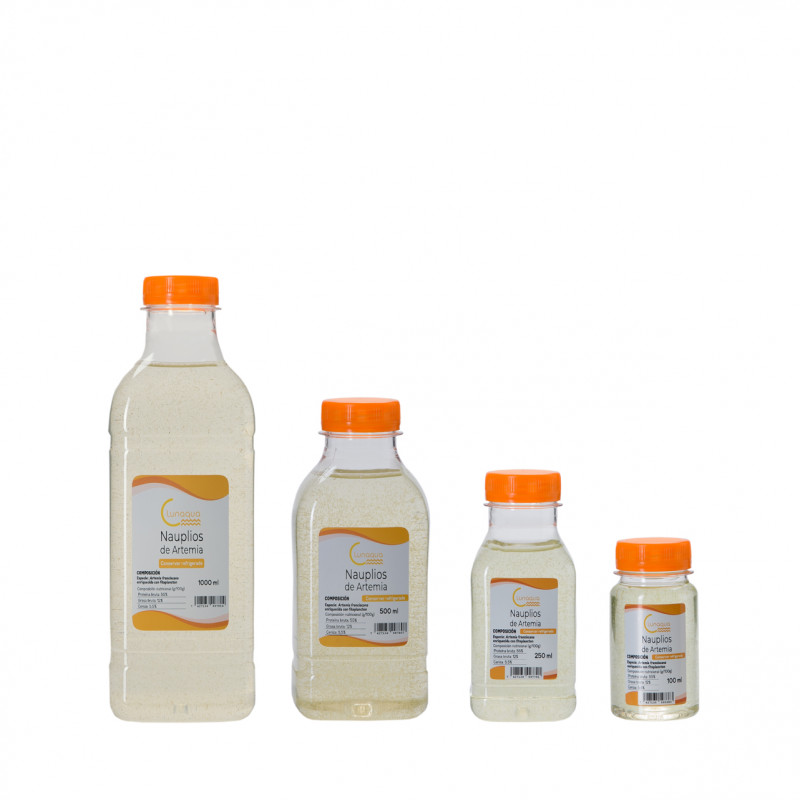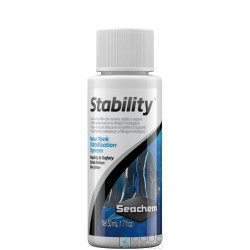More info
Kingdom: Animalia
Phylum: Arthropoda
Subphylum: Crustacea
Class: Branchiopoda
Order: Anostraca
Family: Artemiidae
Genus: Artemia
Species: Artemia salina (Linnaeus, 1758)
Phylum: Arthropoda
Subphylum: Crustacea
Class: Branchiopoda
Order: Anostraca
Family: Artemiidae
Genus: Artemia
Species: Artemia salina (Linnaeus, 1758)
General characteristics
Small branchiopod crustacean.
Since the 1930s, its use in aquaculture has increased considerably, and it is currently the best and in some cases the only live food for the first larval stages of many species of fish and crustaceans.
Its distribution extends to all continents except Antarctica. They are found in lakes with very high salinity (up to 300g/L of salt) where their predators cannot survive. Their great adaptability means that we can find them even in fresh water.
They survive in waters with a high oxygen deficit (withstanding levels of up to 0.5mg of oxygen per liter in their adult phase).
It is used in the breeding of fish and crustaceans intended for both human consumption and aquarium hobby. Used by betta fish breeders.
The nutritional value of stage I nauplii is higher than in stages II and III, the dry weight and caloric content decrease as they increase in size if they do not feed and the increase in size does not help the feeding of certain predators since that these, having a lower swimming rate, require that the brine shrimp have a more limited swimming capacity. The color of artemia is also remarkable, since when it has just hatched it is dark orange (more visible to predators) and as it increases in size it becomes paler and more transparent if it does not feed.
It is highly digestible and covers the macronutrient and micronutrient requirements of marine and freshwater fish larvae, as well as crustaceans.
Newly hatched nauplii have a high level of fatty acids.
By means of bioencapsulation techniques we can introduce into the newly hatched brine shrimp components that the predator is interested in (vitamins, pigments, amino acids,...).
Since the 1930s, its use in aquaculture has increased considerably, and it is currently the best and in some cases the only live food for the first larval stages of many species of fish and crustaceans.
Its distribution extends to all continents except Antarctica. They are found in lakes with very high salinity (up to 300g/L of salt) where their predators cannot survive. Their great adaptability means that we can find them even in fresh water.
They survive in waters with a high oxygen deficit (withstanding levels of up to 0.5mg of oxygen per liter in their adult phase).
It is used in the breeding of fish and crustaceans intended for both human consumption and aquarium hobby. Used by betta fish breeders.
The nutritional value of stage I nauplii is higher than in stages II and III, the dry weight and caloric content decrease as they increase in size if they do not feed and the increase in size does not help the feeding of certain predators since that these, having a lower swimming rate, require that the brine shrimp have a more limited swimming capacity. The color of artemia is also remarkable, since when it has just hatched it is dark orange (more visible to predators) and as it increases in size it becomes paler and more transparent if it does not feed.
It is highly digestible and covers the macronutrient and micronutrient requirements of marine and freshwater fish larvae, as well as crustaceans.
Newly hatched nauplii have a high level of fatty acids.
By means of bioencapsulation techniques we can introduce into the newly hatched brine shrimp components that the predator is interested in (vitamins, pigments, amino acids,...).
Nutritional value
High value in vitamins and proteins
Polyunsaturated fatty acids and high content of interferons (glycoproteins synthesized by cells infected by viruses that inhibit their multiplication)
Considerable amounts of beta carotene, a substance that enhances and intensifies the color of the fish it feeds ( an example of this are the flamingos, of which their characteristic pink color stands out because they feed on brine shrimp).
Polyunsaturated fatty acids and high content of interferons (glycoproteins synthesized by cells infected by viruses that inhibit their multiplication)
Considerable amounts of beta carotene, a substance that enhances and intensifies the color of the fish it feeds ( an example of this are the flamingos, of which their characteristic pink color stands out because they feed on brine shrimp).
Approximate composition of Artemia salina:
Proteins 52-74%
Carbohydrates 7-17%
Lipids 8-16%
Sugars 3-4%
Moisture 85-90%
Ashes 9-20%
Advantages that they present as food
-
They are small in size (400-500 microns newly hatched) and this makes them ideal for feeding fingerlings.
-
High efficiency in feed conversion.
-
They reinforce the hunting instinct of the fish.
-
Excellent food for all types of fish and invertebrates, promoting their pigmentation and good health.
-
We can keep them cold to slow down their metabolism and increase oxygen levels so they last a little longer.
Reviews
No customer reviews for the moment.




